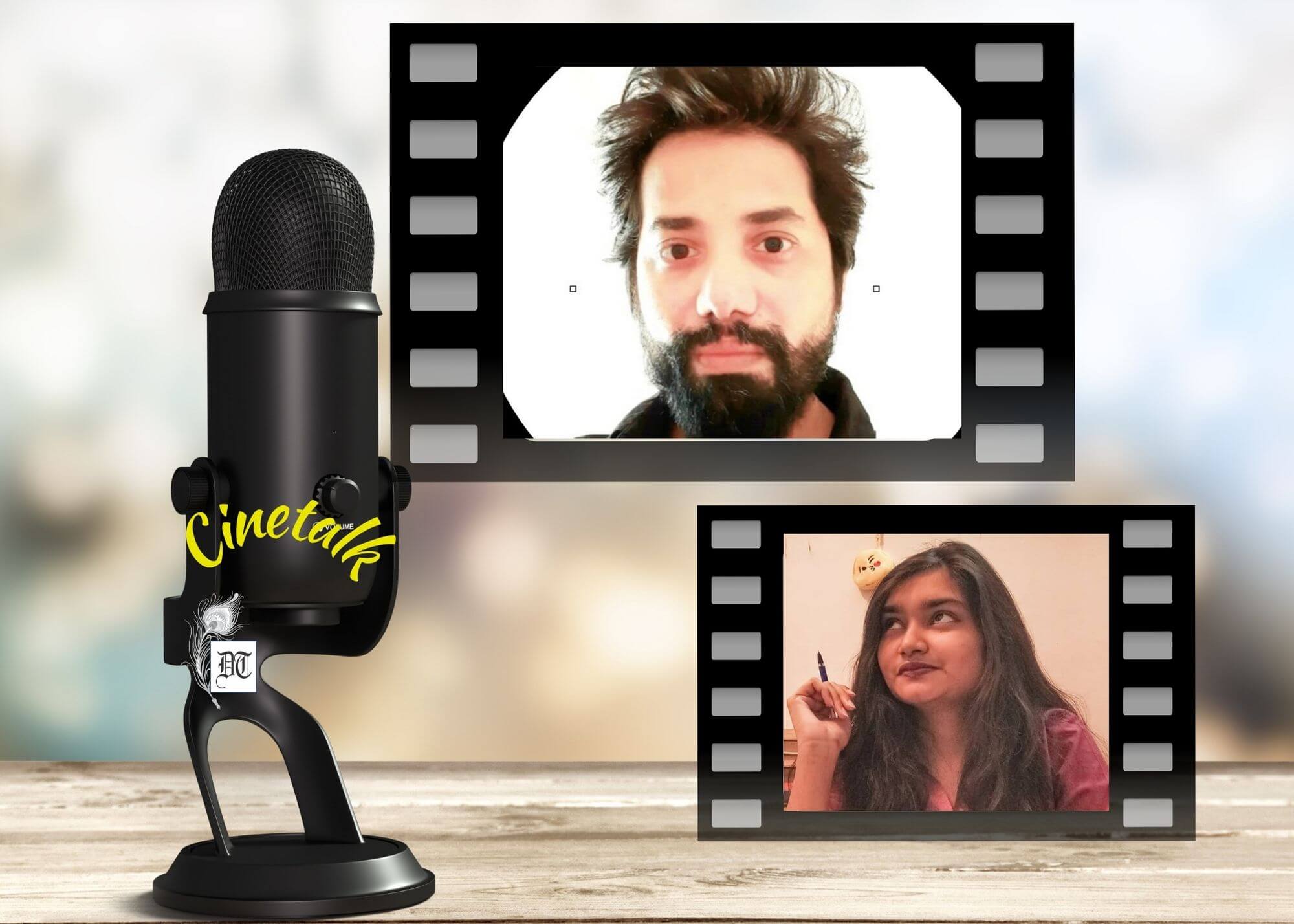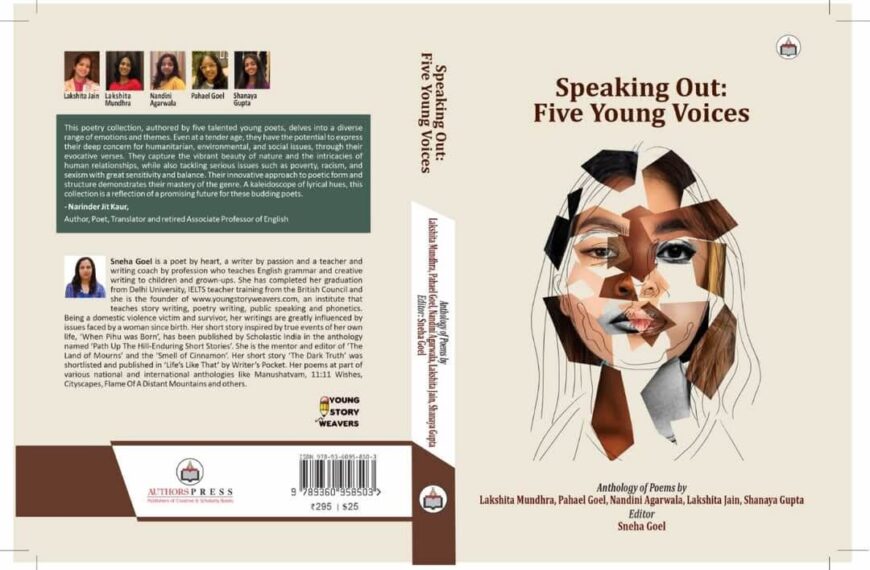Akram Hassan, a Mumbai filmmaker, recently released a critically acclaimed short film that uses humour to explore social issues from a child’s perspective. An interview by Sukanya, exclusively for Different Truths.
Akram Hassan is a screenwriter/director based in Mumbai. Started his film career with Aamir Khan Productions, he has written and directed many critically acclaimed short films, Akram has just finished a feature film under Jio Studios and AAZ films slated for this year’s release and currently involved in developing multiple films and series projects with some well-established production houses.
SBM: Inspiration: What ignited the idea for Pandit Usman? Any defining moments?
AH: As filmmakers and storytellers, we have a natural propensity to explore ideas and content that are socially relevant in the current times. That was the core intention of making Pandit Usman.
I am deeply troubled by the binary we keep setting up in our society. By binary I mean a shallow tendency of humans to split everything into two which are simpler to explain, in this case the binary of “us and them’ based on religious belief.
My cinema is about entertaining audiences with engaging and high impact content and Pandit Usman was one such attempt. The core inspiration to venture and indulge in an idea that attempts re- establishing love and compassion came from this deep belief that at the end it’s only Love, a common vantage point across all differences that can bring people together. Pandit Usman was at that vantage point.
By delving into the complexities of human nature and highlighting the common ground that exists beneath our differences, the core agenda of the film was not only entertaining the audience but also encouraging them to reflect on their own perspectives and biases.
SBM: Scriptwriting: How did you approach scripting this film? Were there specific themes you aimed to convey?
AH: Pandit Usman is very layered writing.
Scripting for me is the most important aspect of a film. It’s like concocting a recipe, where you are picking the main ingredients that shape the final dish. Later it’s only about those ingredients in what measure which we accentuate through camera, art, music, editing and other departments.
I always wanted to keep Pandit Usman lighthearted through a kid’s perspective. Children possess a unique ability to see the world with wonder and innocence and incorporating that into the film adds depth and relatability and along with that constant humour undertones kept the film quite light yet very impactful.
Centering the story around the emotions of the child protagonist, particularly his journey from conflict to resolution, provides a strong narrative axis. By focusing on his perception of his father’s illness and then his realisation in the second half that it’s the people around him who are truly unwell, we tapped into a poignant and universal emotion of the child. Once we managed to replicate this emotion as the primary emotion of the film, I knew it was going to work as a strong narrative.
I wrote multiple drafts of Pandit Usman. Finally, it was the 17th which I was satisfied with and went on to the floor with.
SBM: Balancing Humor: Managing the blend of comedy and serious tones, and how did you achieve this balance?
AH: Pandit Usman is a fine example of mixing genres. Blending drama with comedy always resonates with the audience if done well.
The fusion of drama and comedy in Pandit Usman was a refreshing take on addressing social issues without resorting to finger-pointing or heavy-handedness. By presenting the story through the
innocent perspective of a child, we created a world where the complexities of societal divisions are approached with curiosity and humor rather than judgment.
Well-developed characters and interactive dialogues are essential ingredients in any successful narrative, and our attention to detail in crafting these elements has contributed to the film’s seamless and balanced tone.
The intent of the story ultimately determines its tone, and in the case of Pandit Usman, the combination of humor and a child’s innocence served as a compelling vehicle for conveying important themes. By making the audience care our characters, we succeeded in drawing them into the story and fostering empathy for its message. It’s a testament to the power of storytelling to entertain, enlighten, and inspire positive changes.
SBM: Production Challenges: Were there significant hurdles encountered during filming?
AH: We shot the whole film in five days straight.
For a film which was shot with shoe tight budget with 11 main characters and multiple locations, everyday was challenging and war footing for us.
However strong and detailed preproduction planning helped us in minimising any big disaster.
In hindsight, finding locations near Mumbai that could match north India milieu could be one of the most significant hurdles if I have to pick one now.
SBM: Casting Vision: What criteria guided your casting choices for the characters?
AH: Casting is one of the most important parts of mise-en-scène. A good casting is like giving wings to your characters. It can take your characters to unimaginable realms of cognitive emotional layers which can expand and embellish your narrative in the most magical way.
We managed to cast a slate of some promising performers in Pandit Usman. Since day one, I had very clear idea who I wanted to cast and was fortunate that whoever I went to had loved the script and said yes.
We managed to cast some most sought-after names in film and theatre in Mumbai. Such an ensemble cast in a short film is a very rare occurrence but then it was the film idea that brought them together and worked in our favour.
Talking about what criteria guided me in my casting choice – well it’s never one. It’s an amalgamation of different elements and shades that you see in an actor when you are casting him or her for your characters. Few important attributes that I look into when casting are – their performance, their background/roots (as every individual has their own conditioning, so are actors), their look, their overall body language/structure to name a few. If I have to be very specific and detailed here – for me their eyes also play a very important role in my casting decision.
SBM: Managing Controversy: How did you navigate the line between artistic expression and potential public reaction regarding the controversial topic in Pandit Usman? And following the film’s release, how did you handle diverse public reactions or discussions surrounding these aspects?
AH: India boasts a rich tapestry of cultural and social belief systems that have evolved over millennia. From the diverse religious practices to the multitude of languages and traditions, India’s cultural landscape is incredibly vibrant and dynamic. The influence of these belief systems extends far beyond just religious rituals; they shape everyday life, social interactions, family dynamics, and even political ideologies.
However, it’s also important to acknowledge that India is a land of contrasts and contradictions. While deeply rooted in tradition, it’s also a country that embraces modernity and globalization. This juxtaposition often leads to complex and nuanced discussions around identity, values, and progress.
As filmmakers and storytellers, it’s crucial to navigate and understand these intricate belief systems with sensitivity and respect. By doing so, we can create narratives that resonate with audiences while honoring the diversity and richness of India’s cultural fabric.
For me, Pandit Usman was an attempt to navigate potentially sensitive subject matter with grace and integrity. I always knew it would never create any controversy because the intent of the film was very honest. Also, I used love as the vehicle for change and love is a universal emotion. You can’t go wrong or step on the wrong foot talking about love and compassion.
By fostering an atmosphere of empathy and inclusiveness, Pandit Usman served as a shining example of how as a storyteller we can address complex themes while promoting unity and understanding. I feel it’s a remarkable achievement that reflects our dedication to creating meaningful and impactful cinema.
SBM: Audience Takeaway: What essential message do you hope viewers take from Pandit Usman?
AH: Pandit Usman stands as a beacon of hope, reminding viewers of the transformative power of love. In a world often fraught with division and conflict, the film’s message of love as the fundamental essence of humanity is a powerful reminder of our shared humanity.
By emphasising the universal nature of love, Pandit Usman transcends religious and cultural boundaries, highlighting the common thread that binds us all together. It reinforces the idea that amidst the diversity of beliefs and practices, love remains the core principle that can bridge differences and foster understanding.
In essence, Pandit Usman serves as a testament to the enduring importance of love in shaping our lives and society. It’s a reminder that, ultimately, love is what sustains us and gives meaning to our existence.
SBM: Short Films vs. Longer Formats: How does your creative process differ between these formats?
AH: Since I have started off as a short filmmaker and now working extensively in longer formats, for me the creative process was the same.
The only difference I feel between shorter and longer format is that you get more time to establish your characters and story which in hindsight also underlines the fact that well-made short film writing is more challenging than a feature length.
On the other hand, a feature film gives you more space and time to express your story. With a bigger canvas in disposal, a filmmaker has the option to push his/her ideas and expression
with more complex and elaborate treatment hence a bigger and higher cinematic experience for the audience, something we all love cinema for.
SBM: Working with a child actor: Any unique approaches used to collaborate effectively with the young actor?
AH: Whenever I have to direct a child, I do a lot of homework where I try connecting with the child not as an adult but as a child itself. Once the casting is done, I like spending time with them, get familiar with their mannerism, speech and other small details and try working around it.
We were fortunate to have a very talented child actor in our film. Kabir S. was like a blessing to us.
Also handling child artists needs a very different approach. You can’t explain a scene to a child with an adult’s point of view. Language, examples, emotions – everything must be from their world and their age. Also, in terms of planning and shooting one has to be very specific. Children’s attention span is less and you can’t have multiple takes.
Overall, it’s fun working with child artists, it’s something I immensely enjoy.
SBM: Filming Techniques: Any distinctive methods used to capture the film’s essence?
AH: I always wanted to keep PU real. The location, art, colours, camera moment everything seems very realistic representing the current times.
For a film where we were taking a leap of faith and dabbling in a magic realism space, it was very integral for me to keep it as real as possible to have strong resonance with story and characters without alienating the audience. So, every art, camera, and performance decisions were taken keeping that in mind.
One of the toughest film treatments is the ones where a maker has to find a balance between giving the audience a fulfilling cinematic experience yet keeping the world very realistic. And I feel we somehow managed to achieve that with Pandit Usman.
SBM: Post-Production: How was the film edited to maintain its intended tone and coherence?
AH: I had the film edited on paper before I went on to the floor. As a short filmmaker you don’t have the luxury to shoot a loosely written script and then work on the edit table. Every take, every shot. Every cut has to be well planned and written on paper.
My shoot-to-edit ratio was almost the same.
Talking about coherence and tone, I had decided on the elements and cuts on the paper itself. We also had a rough background score to have good clarity in terms of treatment hence the edit and post-production part was smooth.
SBM: Distribution Challenges: How did you navigate the unique hurdles in distributing a short film?
AH: Unlike a feature or a series, most short films do not have a very strong financial influx hence not an ideal format for seasoned producers to invest. So, at the end a short format in most cases ends up becoming just a writer/director’s medium without any support at exhibition and distribution level.
Besides a handful of decent avenues and producer backed short films there are hardly any mainstream platforms/production houses that entertain short films.
Coming to the business side of it – Mostly all short films are distributed and exhibited on revenue sharing which honestly is too less for a maker to even recover their production cost.
I managed to keep the production cost as low as possible which helped me tin taking some strong and brave decisions at the time of distribution.
SBM: Distribution Avenues: Which platforms were targeted for the film’s release, and why?
AH: I met almost all major OTT platforms available right now. Many of them liked the film but they didn’t have a workflow to release short format in India. The process was quite long and rigorous, but it was worth going through it as I learnt a lot about distribution and business side of films.
Fortunately, Humara Movies, one of the few decent names in indie short film platforms came on board and they along with Disney Hotstar released the film. Currently it’s available on Humara Movies platform, a YouTube channel with over 12 lakhs subscribers.
SBM: Online Presence: How crucial were digital platforms in reaching your audience?
AH: For a short film it’s always word of mouth. It’s the content that would eventually give you audience. Social media is something you can’t live without these days and online presence is must for a short film.
Me and my team used all major social media network in posting about the film and it did help in reaching to our audience.
Even today, after more than 2 years of its release I get emails and text messages from people, film clubs, cinema groups about Pandit Usman. For a short format to have such resonance is unimaginable but it surely gives us more strength and confidence to keep making good content.
SBM: Promotion: What strategies proved most effective in promoting the film’s visibility?
AH: To be honest, we had no money for promotion. It was simple word of mouth. I had a small screening for friends and industry contacts and it picked from there. They loved the film and posted on their social media platforms. Also because of it’s content and simple story telling it was picked by news portals like Lallantop, Scroll, Bollywooyhumgama, etc., to name a few.
Content is everything in short format. If you have a good film in hand, it will find it’s audience.
SBM: Film Festival Experience: Did festival participation impact the film’s recognition?
AH: I didn’t send Pandit Usman to any film festivals.
SBM: Networking Importance: How pivotal is networking for a short film’s success?
AH: Networking is very integral for any format. From the time of casting, preproduction to the final exhibition, networking plays an important role.
It helped me in spreading the word at the time of its release and also post that. Again as I said – short film is a writer/directors medium and with limited resources the only thing that can help achieve one’s goal in making a short content is through networking and asking for help.
SBM: Lessons Learned: What key insights were gained from distributing “Pandit Usman”?
AH: Keep your production cost as low as possible without compromising on your creative expression.
A good short film is not just about content but also how you handle the logistic side of its making with limited resources. It’s a great hands-on-learning which even feature film directors should keep doing in-between as an exercise. I always say that filmmaking for a director is like a tango between their creative vision and the film logistics.
SBM: What are you working on these days ?
AH: I have just completed a feature thriller which I have written and directed titled Ikroop with Jio Studios and AAZ Films featuring Mithila Palkar, Kumud Mishra, Gauhar Khan, Swanand Kirkire, Girish Kulkarni and others.
I have also completed writing a sports drama which I am very excited about it. It’s a story of an underdog around a very unlike sport. It’s a lighthearted social drama. Apart from that I am developing a thriller for AAZ Films and also working on a social satire titled “the Kiss” written, directed and produced by me.
SBM: Advice for Aspiring Filmmakers: What guidance would you offer based on your experiences with “Pandit Usman”?
AH: Pick a camera, a mobile phone or anything that records and go out and shoot. Thats the best way to learn filmmaking. And never shy away from asking for help.
Also, Always Think Big. I read this very interesting phrase somewhere – “ if your dream does not scare you, it isn’t big enough! “ – Live by it!
Photo sourced by interviewer and feature image designed by Anumita Roy






 By
By
 By
By

 By
By